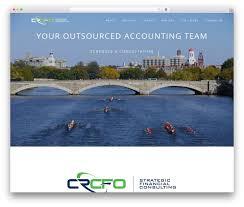#Fractional CFO Consulting MD
Video
youtube
Fractional CFO Consulting MD
Fractional CFO consulting offers businesses the opportunity to benefit from experienced financial leadership on a part-time basis.
Beyond Profit And Wealth Consulting provides the best Fractional CFO Consulting Services In MD for businesses of all sizes, helping them with financial strategy, planning, and decision-making.
For details, visit the website.
https://beyondprofitconsult.com/accounting-services/
0 notes
Text
Maryland Accounting Services
Looking for the best Maryland Based Accounting Services?
Contact Beyond Profit And Wealth Consulting. Our team of experienced professionals is dedicated to ensuring accuracy, compliance, and efficiency in all your financial matters. Whether you're a small start-up or a large corporation, we offer personalized solutions that help you manage your finances with confidence.
For details, visit the website.
#CFO Services For Startups MD#CFO Consulting Maryland#Automated Accounting Services Maryland#Automated Bookkeeping Maryland
0 notes
Text
M&A: Is it the right time for your company and are you ready?
Charles River CFO works with a number of their clients to ready them for a merger or acquisition. Sometimes our Outsourced CFO and Accounting Services in Boston are brought in to specifically assist the client to get ready for this transaction, other times, as their long term fractional CFO we have been positioning them for such an exit. For many of our clients, M&A can be lucrative for owners and investors. Whether it is part of an exit/payout or just another part of your growth strategy, it’s important to be strategic (to leverage both value and growth).
It is healthy to take an active look at M&A even if you choose not to pursue it. Some of the "exercises" of considering M&A can produce healthy changes in your organization.
There are a few key steps to prepare for such a transaction. Then comes the evaluation.
So let’s talk about preparation. Here are a few take-always from helping our clients prepare for this transaction. Keys are: 1) your financials 2) your internal risk assessment 3) defining your business 4) your readiness to be acquired and 5) market readiness/cycle.
Your finances.
In addition to having at least three years (preferred) of financials that are GAAP or GAAP-lite, review your accounts and clean up any questionable areas. How strong are your receivables and its reserves? Any judgement based accruals need to be scrubbed? Any convertible or off balance sheet debt?

Segregate recurring revenue from one-off revenue. Same for their associated expenses. This exercise is a general pass at the quality of your earnings. What can your acquirer count on? Can you tell a story that supports growth? Can that growth be extended forward into future years?
Be sure to footnote or to explain major transactions and have the ability to pull them out of your financials should you want or need to.
Your internal risk assessment
Diagnose your business' strengths and weaknesses. Don’t think your potential acquirer hasn’t already done this. Your upfront assessment puts you in front of the conversation. Knowing your "skeletons" and addressing them demonstrates your understanding of the business. What are your hidden gems? Define your uniqueness and explain them.
As a business you have areas of exposure both by definition, due to the business you are in, and by how you designed your infrastructure.See more: Interim CFO and Accounting Services Boston
Your exposure by definition of the business you are in should be known by your acquirer. By identifying this business risk, you demonstrate your understanding of the business you are in. For example, could your business be susceptible to obsolescence, requiring constant innovation? How have you addressed or mitigated this business risk?
Now address the risk from how you have designed your business. Is your business lean and relies on key individuals? Have you spread your risk by diversification? Capture this information. Many companies have evolved in their business design and are often startled when they look at the risk they have designed into their business model. Maybe you focused on research and development or marketing and allowed your back office infrastructure to lag. Don’t be caught flat footed. If you know your weaknesses, you might have time to redesign and explain these changes in a proactive fashion. Know them versus being caught unaware during due diligence.

Defining your business
Think of this as your "management’s discussion and analysis" (MD&A.) While we all wish to believe we are that unicorn, your business twin is out there. Take the information you pulled together from your analysis of your financials and your internal risk and write it up. Do your research and find your twin in the public market. Know what you are up against. The information disclosed by your twin is probably what your acquirer will want to know at a minimum.
Be ahead of your potential acquirer’s request. By writing up your own business description, you define the conversation. This is the time to capture and disclose any one-off costs. If there are any unique compensation models, get those details out there. Allow the acquirer to easily create the EBITDA bridge and carve out savings from acquisition. And don’t forget to highlight your hidden gems.
Your readiness to be acquired
Is your company ready? As a business, what does an analysis of product sales look like? What does the top line revenue look like and does your 5 years' growth projections align with this? Where are you versus your market spaces penetration?
Is your business in a position of perceived strength or weakness? Even a weakness may have key value to another company (for example immature market penetration prior to acquisition might partner well with existing market penetration by the acquirer.). Have you achieved key business milestones? Will a deal facilitate achieving key milestones?
Is your company psychologically ready for the deal? And does it matter? Will the company be stronger after an acquisition? It might be necessary to communicate the benefits of an acquisition or merger. Top talent will always have choices, the right message will keep them.

Is the market ready?
If you are strong, the market is always ready. But if your business can fluctuate with the economy, consider being ready while the economy is still growing.
Think about who is your ideal acquirer. Pull the list together by general industry and specific firms. Identify the pros and cons of both players by market and by individual firms.
Know what comparable deals look like, both by size and industry. What are the pros and cons of various business partners? Understand the multiple ranges. Draft your ideal transaction and then give that deal a haircut.
If you are sitting in a position of perceived weakness understand the potential impact. Can you make lemonade out of the deal? Is the sum of the deal less than the parts? Does your business have valuable segments that might be worth more carved out and the remainder company be sold at a discounted value? Look at what the market has done in both these instances.
Ready for marriage?
Firms often find it hard to get through M&A preparation. Charles River CFO has worked with numerous companies helping them get ready for a transaction. The better prepared your company is, the easier it is to decide if the deal is right for you. Do you care who you are marrying? It is important if key professionals will have an ongoing role in the acquired firm. It could be important if earn-out or other contingent fees are tied to the transaction. As a fractional CFO augmenting your team, we can help you determine fit of product or market. Some deals require a level of reverse due diligence, is the acquiring firm healthy, good corporate culture fit, and market alignment. Charles River CFO can help you sort through the deal.

About Author
CRCFO is a technical accounting and financial consulting firm utilizing a flexible and scalable team approach. Our technical team is led by highly experienced former Big 4 partners. To support your business strategy, we collaborate with your stakeholders to navigate your important transactions – IPOs, M&As, revenue arrangements - and other complex accounting, systems, process and business issues. CRCFO employs a risk-based approach to help you minimize transaction risk which maximizes stakeholder value by anticipating matters that can derail your business, transactions, financing, and external audits.
By Connie Wright, President
Charles River CFO
#Outsourced CFO and Accounting Services in Boston#Finance and Accounting Outsourcing in Boston#Part-time CFO and accounting services Boston#Boston Temporary CFO and Accounting Services#Boston Outsourced Non-Profit CFO Services#Boston Outsourced Bookkeeping Services#Interim CFO and Outsourced Tax Service Boston
0 notes
Text
M&A: Is it the right time for your company and are you ready?

Charles River CFO works with a number of their clients to ready them for a merger or acquisition. Sometimes our outsourced CFO and accounting services is brought in to specifically assist the client to get ready for this transaction, other times, as their long term fractional CFO we have been positioning them for such an exit. For many of our clients, M&A can be lucrative for owners and investors. Whether it is part of an exit/payout or just another part of your growth strategy, it’s important to be strategic (to leverage both value and growth).
It is healthy to take an active look at M&A even if you choose not to pursue it. Some of the "exercise" of considering M&A can produce healthy changes in your organization.
There are a few key steps to prepare for such a transaction. Then comes the evaluation.
So let’s talk about preparation. Here are a few take-always from helping our clients prepare for this transaction. Keys are: 1) your financials 2) your internal risk assessment 3) defining your business 4) your readiness to be acquired and 5) market readiness/cycle.
Your financials.
In addition to having at least three years (preferred) of financials that are GAAP or GAAP-lite, review your accounts and clean up any questionable areas. How strong are your receivables and its reserves? Any judgement based accruals need to be scrubbed? Any convertible or off balance sheet debt?
Segregate recurring revenue from one-off revenue. Same for their associated expenses. This exercise is a general pass at the quality of your earnings. What can your acquirer count on? Can you tell a story that supports growth? Can that growth be extended forward into future years?
Be sure to footnote or to explain major transactions and have the ability to pull them out of your financials should you want or need to.
Your internal risk assessment
Diagnose your business' strengths and weaknesses. Don’t think your potential acquirer hasn’t already done this. Your upfront assessment puts you in front of the conversation. Knowing your "skeletons" and addressing them demonstrates your understanding of the business. What are your hidden gems? Define your uniqueness and explain them.
As a business you have areas of exposure both by definition, due to the business you are in, and by how you designed your infrastructure.
Your exposure by definition of the business you are in should be known by your acquirer. By identifying this business risk, you demonstrate your understanding of the business you are in. For example, could your business be susceptible to obsolescence, requiring constant innovation? How have you addressed or mitigated this business risk?
Now address the risk from how you have designed your business. Is your business lean and relies on key individuals? Have you spread your risk by diversification? Capture this information. Many companies have evolved in their business design and are often startled when they look at the risk they have designed into their business model. Maybe you focused on research and development or marketing and allowed your back office infrastructure to lag. Don’t be caught flat footed. If you know your weaknesses, you might have time to redesign and explain these changes in a proactive fashion. Know them versus being caught unaware during due diligence.
Defining your business
Think of this as your "management’s discussion and analysis" (MD&A.) While we all wish to believe we are that unicorn, your business twin is out there. Take the information you pulled together from your analysis of your financials and your internal risk and write it up. Do your research and find your twin in the public market. Know what you are up against. The information disclosed by your twin is probably what your acquirer will want to know at a minimum.
Be ahead of your potential acquirer’s request. By writing up your own business description, you define the conversation. This is the time to capture and disclose any one-off costs. If there are any unique compensation models, get those details out there. Allow the acquirer to easily create the EBITDA bridge and carve out savings from acquisition. And don’t forget to highlight your hidden gems.
Your readiness to be acquired
Is your company ready? As a business, what does an analysis of product sales look like? What does the top line revenue look like and does your 5 years' growth projections align with this? Where are you versus your market spaces penetration?
Is your business in a position of perceived strength or weakness? Even a weakness may have key value to another company (for example immature market penetration prior to acquisition might partner well with existing market penetration by the acquirer.). Have you achieved key business milestones? Will a deal facilitate achieving key milestones?
Is your company psychologically ready for the deal? And does it matter? Will the company be stronger after an acquisition? It might be necessary to communicate the benefits of an acquisition or merger. Top talent will always have choices, the right message will keep them.
Is the market ready?
If you are strong, the market is always ready. But if your business can fluctuate with the economy, consider being ready while the economy is still growing.
Think about who is your ideal acquirer. Pull the list together by general industry and specific firms. Identify the pros and cons of both players by market and by individual firms.
Know what comparable deals look like, both by size and industry. What are the pros and cons of various business partners? Understand the multiple ranges. Draft your ideal transaction and then give that deal a haircut.
If you are sitting in a position of perceived weakness understand the potential impact. Can you make lemonade out of the deal? Is the sum of the deal less than the parts? Does your business have valuable segments that might be worth more carved out and the remainder company be sold at a discounted value? Look at what the market has done in both these instances.
Ready for marriage?
Firms often find it hard to get through M&A preparation. Charles River CFO has worked with numerous companies helping them get ready for a transaction. The better prepared your company is, the easier it is to decide if the deal is right for you. Do you care who you are marrying? It is important if key professionals will have an ongoing role in the acquired firm. It could be important if earn-out or other contingent fees are tied to the transaction. As a fractional CFO augmenting your team, we can help you determine fit of product or market. Some deals require a level of reverse due diligence, is the acquiring firm healthy, good corporate culture fit, and market alignment. Charles River CFO can help you sort through the deal.
About Author
CRCFO is a technical accounting and financial consulting firm utilizing a flexible and scalable team approach. Our technical team is led by highly experienced former Big 4 partners. To support your business strategy, we collaborate with your stakeholders to navigate your important transactions – IPOs, M&As, revenue arrangements - and other complex accounting, systems, process and business issues. CRCFO employs a risk-based approach to help you minimize transaction risk which maximizes stakeholder value by anticipating matters that can derail your business, transactions, financing, and external audits.
By Connie Wright, President
Charles River CFO
#Outsourced CFO and Accounting Services#Accounting Outsourcing#Fractional CFO and Accounting Services
0 notes
Text

Outsourced CFO Services Maryland
Looking for the best Outsourced CFO Services In Maryland?
Visit Beyond Profit And Wealth Consulting. Our team of experienced professionals offers a range of services including financial planning, budgeting, cash flow management, and financial reporting. By partnering with us, businesses can access top-tier financial expertise at a fraction of the cost of hiring a full-time CFO.
For details, visit the website.
#CFO Services For Startups MD#CFO Consulting Maryland#Automated Accounting Services Maryland#Automated Bookkeeping Maryland
0 notes